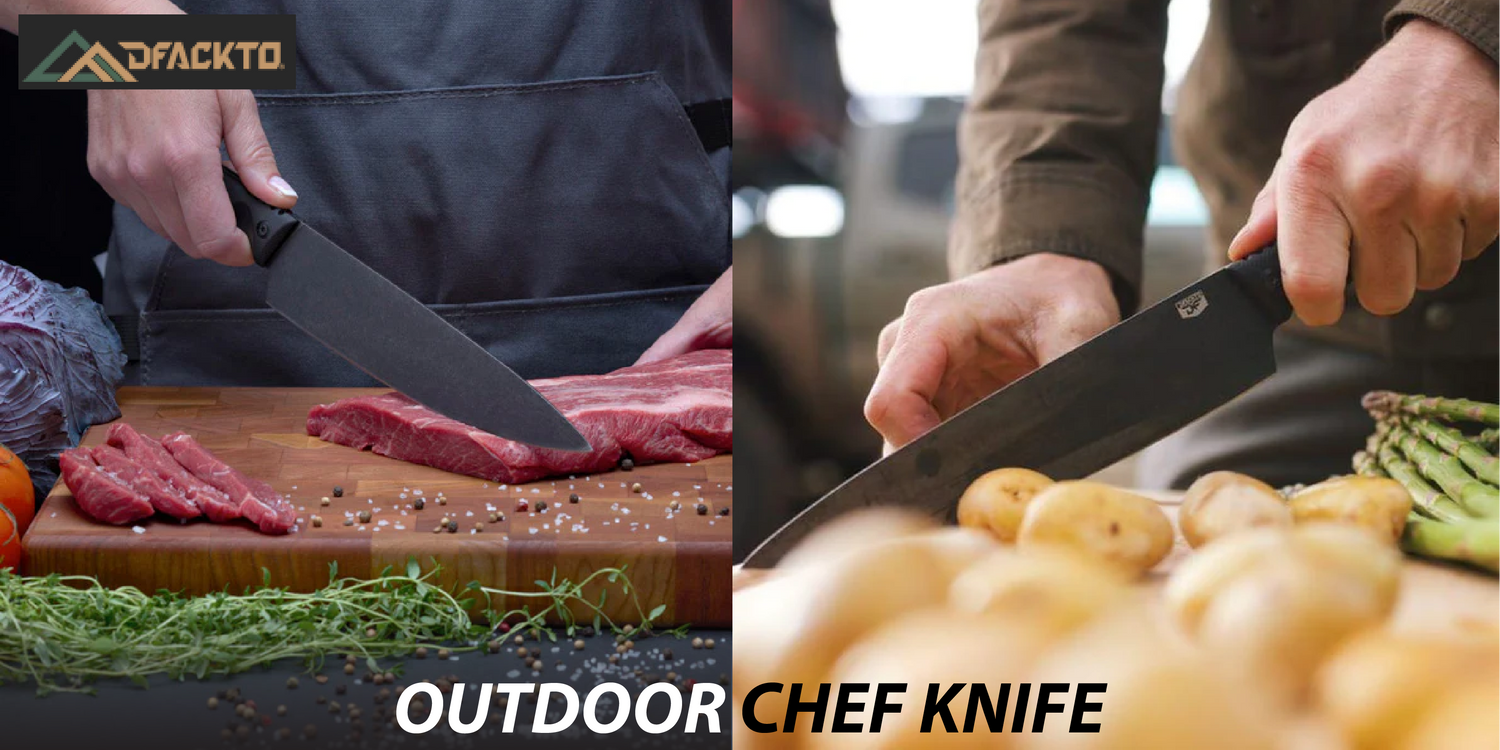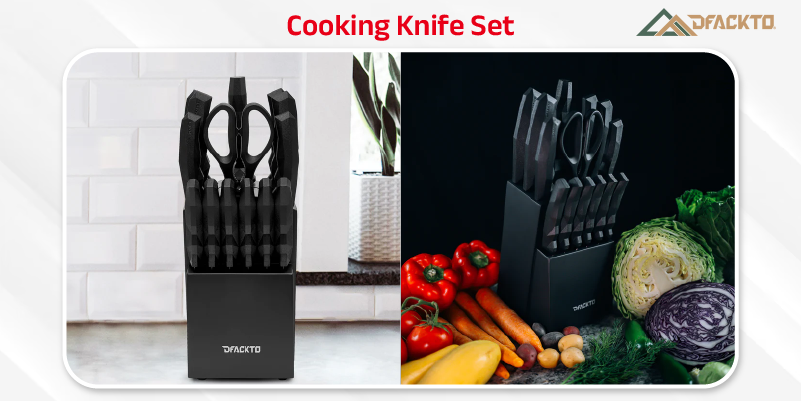A Chef's knife is one of the most valuable tools in your arsenal when it comes to time and efficiency for meal prep. It is the do-it-all knife, the one you will all need for everything, from chopping fruit and vegetables to cutting meat to crushing whole spices. But come on, we all know that kitchen blunders happen. Read on to learn how to keep your outdoor chef knife skills sharp by avoiding these common mistakes.
#1 Cutting on the incorrect work surface.
Just as essential as using the right knife for cooking is slicing and dicing on the right surface. Cutting on extra-hard surfaces like ceramic and glass cutting boards and plates will quickly dull or even damage your knife's blade. Using a cutting board that's not properly secure can be risky, as it can slip out from under you as you cut.
Follow this tip: Always work on wood and plastic cutting boards to protect your knives from unnecessary wear and tear. Also, remember to secure your cutting board with a no-slip mat or a damp paper towel.
#2 Holding the knife incorrectly.
Are you holding your kitchen knife the right way? When held wrongly, you have very minimal control over the knife. It's less stable and less balanced, leaving more room for it to slip off the cutting board or food. Good knife technique isn't just essential for safety; it also gives you more control over the knife and makes you more efficient with meal prep work. Remember, it all starts with the way you hold the knife.
Follow this tip: Before cutting, ensure you're holding your outdoor kitchen knife the right way. Pinch the bolster, where the handle meets metal, using your index finger and thumb, then wrap the other fingers around the handle.
#3 Always hand wash your knives- do not use any dishwasher
Always hand wash your knives and then try to immediately dry them.
- When cleaning your knife, avoid scrubbing along the edge; wash from the back off the edge.
- Allow the soap to sit on the knife for approximately 30 seconds to kill and break down germs effectively, similar to washing your hands.
- For serrated knives, use a brush to reach into the crevices of the teeth for thorough cleaning.
- After washing, dry your outdoor chef knife thoroughly using a cotton towel. Avoid letting your knife air dry to minimize exposure to water, as a longer period of exposure can lead to rusting.
Why you shouldn't run your knives through the dishwasher
Never use any dishwasher to clean your kitchen knives, even if they claim to be "dishwasher safe." While the label may apply to the handle, it doesn't indicate the entire knife can withstand dishwasher applications.
Using the dishwasher can deteriorate knives and harm the dishwasher itself. The knife's sharp edges can damage the coated metal racks and plastic in the dishwasher, leading to rust and other damage. Plus, the knife may collide with other dishes, causing further harm.
Dishwashers expose knives to hot water and sediment, which can dull the blade over time. Prolonged exposure to water and heat can also harm the knife handles.
Additionally, whether liquid or powdered, dishwasher detergents are often high in alkaline content that can chemically damage the knife's edge.
Remember, an outdoor kitchen knife is stainless, not stain-free. Extended exposure to water in the dishwasher increases the risk of rusting. To prevent this, avoid wetting your knife for more than 2-3 minutes after use. Instead, do hand washing and thorough drying to keep your knives in top condition.
Here are a few other materials you shouldn't put in the dishwasher:
- Silver
- Brass
- Cast Iron
- Disposable Plastic
- Wood
- Fine Glassware
- Bronze
- Aluminum
- Pewter
- Gold-leaf
#4 Cutting things using the wrong part of the blade.
A chef's knife is more than a blade and a handle. As with using the right knife for the job, using the right part of the blade is also essential.
For the optimal and safest results, always use the right blade parts. The blade of an outdoor chef knife has four different parts: point, tip, heel, and spine (edge). Use the point for piercing foods and the tip for delicate tasks. The heel of the blade is best for hard ingredients like carrots and winter squash. Lastly, use the spine for scraping things like chili, tomato, and vanilla bean seeds.
#5 Cutting with a knife that isn't sharp
Undoubtedly, a dull knife is the most dangerous knife. The blade of your knife naturally dulls over time with continuous use. When it no longer has a sharp blade, the knife doesn't grip food, which is more likely to cause it to slip. You have more chances of getting injured using a dull knife than a sharp one.
Sharpen your chef's knife once in a while. The frequency depends on how often you use your knife and how you maintain it.
The Bottom Line
Getting the best outdoor kitchen knife from Dfackto makes cooking outside much more enjoyable. With features like sharp blades and comfortable handles, cooking outside becomes more fun and easy. Browse the selection to improve your cooking experience. Check out the great deals now and start cooking like a pro with Dfackto!



